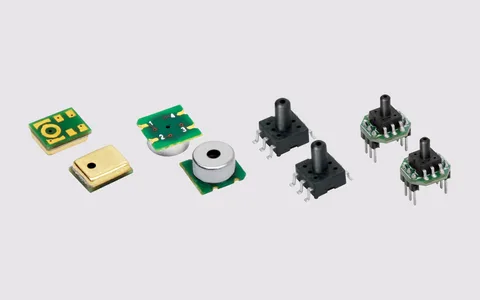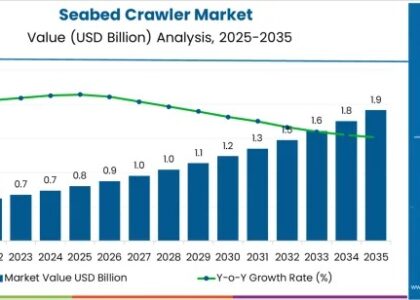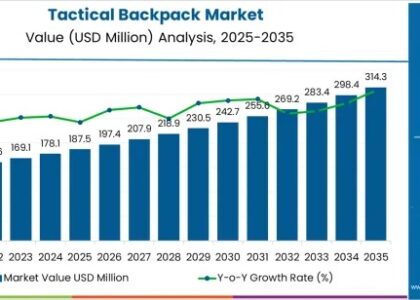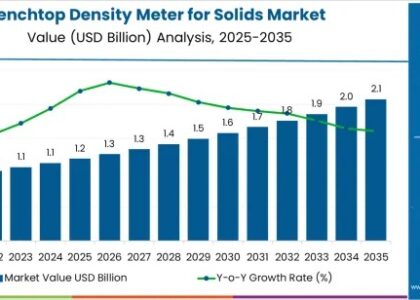The sensors market is anticipated to grow to USD 250 billion by 2025 and spike at CAGR of 6.7% to USD 480 billion by 2035. Trends in the industry are fueled by innovation in sensor technologies, widespread use of IoT and AI-based applications, as well as government drives toward smart cities and Industry 4.0. Industry growth is also augmented further by growing demands for automation, real-time monitoring, and predictive maintenance in industries.
In a world increasingly defined by intelligence, automation, and connectivity, one foundational technology is working silently behind the scenes—translating the physical world into digital signals: sensors.
From the smartphone in your pocket and the car in your driveway to industrial robots, wearable health monitors, and smart city infrastructure, sensors are the invisible enablers of modern technology. They don’t just detect—they perceive, analyze, and initiate action. Quietly embedded everywhere, the sensors market is fueling a data-driven transformation across nearly every sector.
Request Your Sample and Stay Ahead with Our Insightful Report!
https://www.futuremarketinsights.com/reports/sample/rep-gb-272
More Than Detection: Enabling Intelligent Interaction
At their core, sensors convert real-world stimuli—temperature, motion, pressure, light, proximity, and more—into measurable digital data. But modern sensors go far beyond basic detection. They’re now part of intelligent systems that process context, learn patterns, and make real-time decisions.
In autonomous vehicles, they detect pedestrians and road conditions. In agriculture, they monitor soil moisture and crop health. In healthcare, they track heart rates, oxygen levels, and movement. These aren’t passive tools—they’re foundational components of smart ecosystems.
Unseen Yet Ubiquitous
Sensors rarely stand alone or draw attention, but they’re embedded in nearly every piece of technology we interact with. They’re in our phones, appliances, factories, drones, and even clothing. Their ubiquity makes them indispensable—quietly powering everything from user interfaces to predictive maintenance systems.
As industries embrace automation, IoT, and AI, the role of sensors expands. They feed the data that drives machine learning models, triggers safety systems, and powers real-time analytics. In this way, sensors form the sensory nervous system of our increasingly digital world.

Engineered for Precision, Designed for Versatility
Today’s sensors are marvels of miniaturization, durability, and sophistication. They must perform with high accuracy, low latency, and energy efficiency—often in harsh environments or within tiny spaces. Whether it’s a MEMS accelerometer in a smartwatch or an optical sensor in a self-driving car, design constraints are strict, and reliability is non-negotiable.
Sensor technologies continue to evolve, incorporating wireless connectivity, edge computing capabilities, and integrated signal processing. Multi-sensor fusion—where data from multiple sensor types is combined—enhances performance in complex applications like autonomous navigation and industrial automation.
Challenges Beneath the Surface
Despite their success, the sensors market faces significant challenges. Standardization, data interoperability, and cybersecurity remain major hurdles, especially as sensors proliferate across sectors and geographies. Calibration, power consumption, and lifespan are also critical considerations in high-stakes environments like aerospace, medical, and defense.
Manufacturers are responding with smarter, more adaptive sensor platforms—combining hardware innovation with firmware flexibility. The goal is not just to sense, but to sense smarter—accurately, efficiently, and securely, across millions of devices and use cases.
Thorough Market Evaluation: Full Report
https://www.futuremarketinsights.com/reports/sensors-market
Driving the Next Wave of Innovation
Sensors are no longer just components—they’re catalysts. As technologies like AI, robotics, AR/VR, and digital twins gain traction, sensors provide the real-world inputs these systems rely on to function effectively. They enable real-time interaction between humans and machines, environments and infrastructure.
In sustainability efforts, sensors optimize energy usage, monitor emissions, and track environmental changes. In healthcare, they support remote monitoring, early diagnosis, and personalized treatment. In manufacturing, they reduce downtime and improve quality. Their contribution is vast, often silent, but profoundly impactful.
The Pulse of a Connected World
You might never see them, but you rely on them constantly. Sensors are quietly bridging the physical and digital realms—empowering smarter decisions, seamless automation, and safer experiences across every facet of modern life.
As the world moves toward hyper-connectivity and intelligent systems, sensors will remain the foundational layer—measuring, detecting, responding. Not just as components, but as silent sentinels shaping the next era of technology. Precise, pervasive, and perpetually evolving, the sensors market isn’t just growing—it’s sensing the future, one signal at a time.






